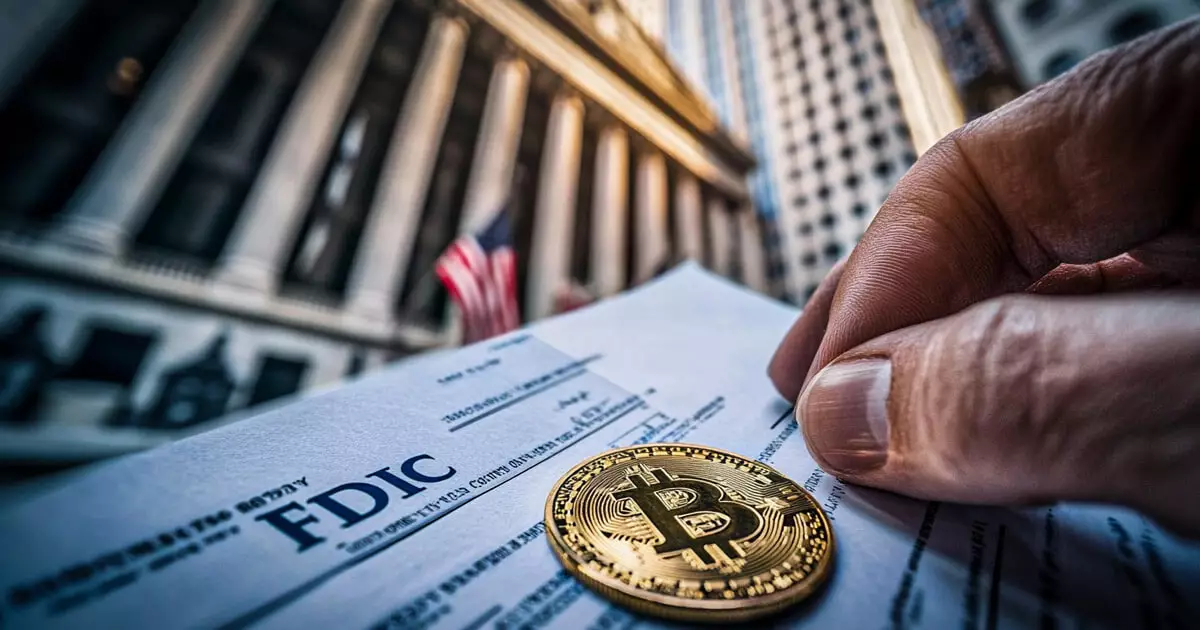In a significant move that may reshape the banking sector’s approach to digital assets, the Federal Deposit Insurance Corporation (FDIC) is poised to revise its guidelines governing banks’ involvement in cryptocurrency-related services. This shift, as reported by Barrons on February 5, reflects an evolving regulatory landscape that appears more receptive to integrating technology with traditional banking practices. The forthcoming changes might enable banks to engage in certain crypto activities without obtaining prior regulatory approval, a departure from the stringent oversight that has characterized the FDIC’s stance in the recent past.
Reports suggest that several banks have been actively engaging with governmental bodies to lobby for permissions to offer services such as crypto custody and tokenized deposits. The concept of tokenized deposits, which could facilitate a merger of traditional checking accounts with blockchain technology, signifies a noteworthy evolution in how banks could perceive and utilize digital assets. This adaptation is not merely a passing trend; rather, it indicates a recognition of the necessity for the banking system to innovate in response to the rapid growth of the cryptocurrency market.
The FDIC’s Transparency Commitment
On the same day, the FDIC released hundreds of documents concerning its previous interactions and oversight of financial institutions considering cryptocurrency services. Highlighting a shift in transparency practices, the release of these 175 documents comes in the wake of a Freedom of Information Act (FOIA) request from Coinbase, which had sought clarity on an alleged 15% deposit cap for banks involved in cryptocurrency. This action, as stated by FDIC acting chairman Travis Hill, aims to foster transparency beyond legal requirements while adhering to the spirit of the FOIA.
What’s particularly striking is the context in which these documents were made public. The FDIC had previously issued “pause letters” to 24 banks, advising them against proceeding with crypto services. The timing of the document release suggests a pivot in the FDIC’s approach, indicating a willingness to open discussions that might foster a greater acceptance of cryptocurrency within the banking system.
Despite this apparent shift, pieces of the released documents paint a sobering picture of the regulatory environment that banks have navigated in pursuing crypto opportunities. Reports from various stakeholders, including Coinbase’s chief legal officer Paul Grewal, underscore the challenges banks faced in engaging with the FDIC. Grewal argued that the FDIC’s actions resembled a method of “regulation by exhaustion,” where banks were subjected to exhaustive regulatory inquiries, ultimately dissuading them from pursuing crypto initiatives.
The documents reveal a pattern of resistance from the FDIC, which often requested extensive information from banks while simultaneously delaying responses. Such tactics have had a chilling effect, with many banks opting to retract their crypto-related offerings rather than face prolonged uncertainty from regulators. The reluctance to embrace digital assets is echoed in the FDIC’s expressed concerns regarding volatility, consumer protection, and reputational risks associated with cryptocurrency.
This evolving narrative becomes even more complex when considering the internal discussions reflected in the FDIC’s documents. Caitlin Long, CEO of Custodia Bank, highlighted instances where FDIC officials appeared to be advising against engaging with crypto deposits, explicitly linking the term “deposit” to traditional, dollar-denominated trust—suggesting a lack of comfort with digital alternatives. Such communications provide a window into the cautious mindset of regulatory bodies as they grapple with the implications of integrating crypto technologies with established banking frameworks.
As the FDIC prepares to navigate this new regulatory terrain, the potential for constructive engagement with cryptocurrency within mainstream banking is fraught with both opportunity and uncertainty. The recent document release and regulatory recalibrations reflect a growing acknowledgment of the digital asset landscape’s complexities. For banks, the path forward may require a careful balance of innovation and compliance as they seek to harness the benefits of blockchain technology while satisfying evolving regulatory expectations.
In essence, the FDIC’s actions signify a pivotal moment for the banking industry, as the long-standing separation between traditional finance and digital assets continues to blur. As banks begin to visualize a future that accommodates these technologies, the journey will undoubtedly be filled with obstacles and adjustments that will reshape the financial industry’s narrative in the years to come.


Leave a Reply